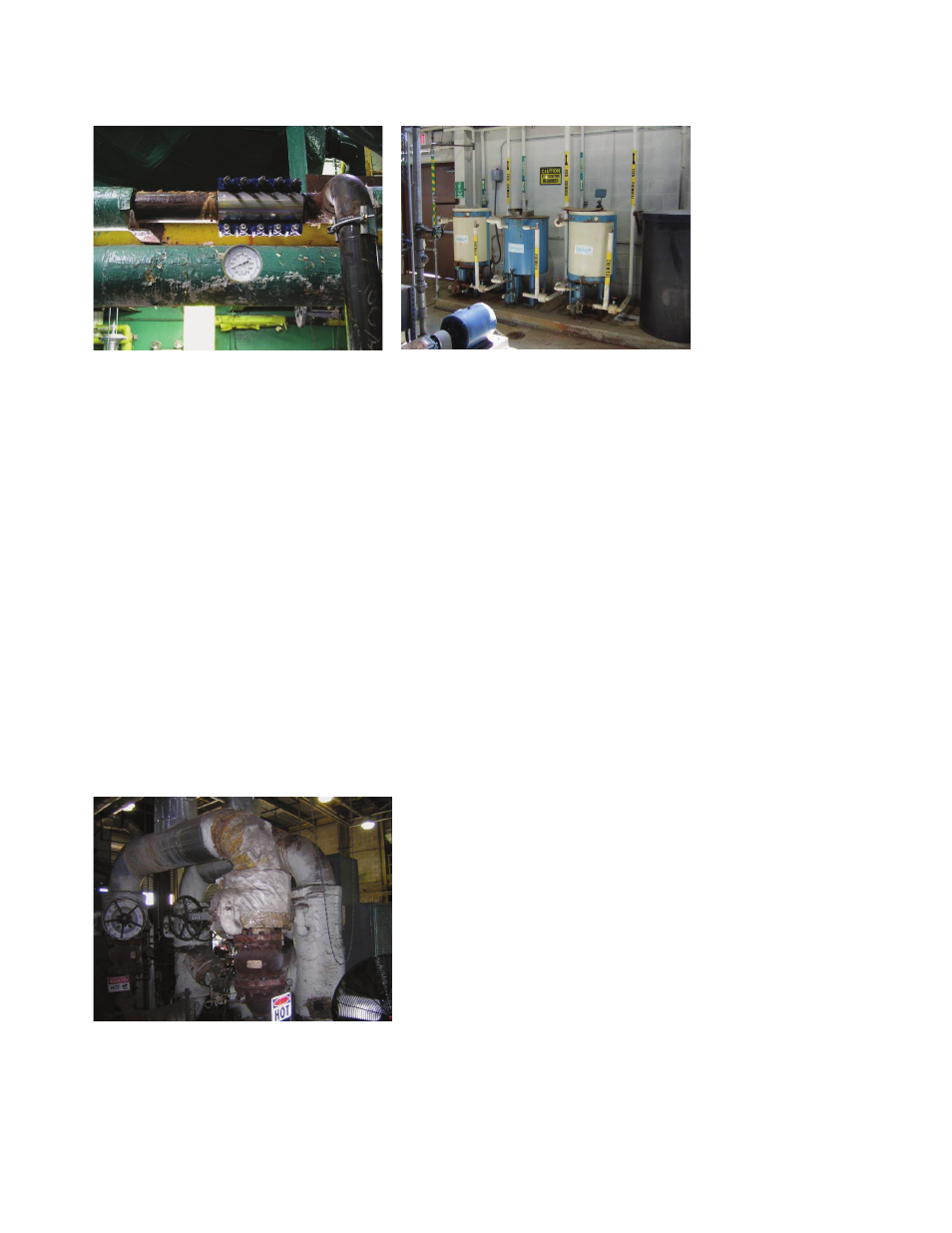Retrotec USACE User Manual
Page 177

Appendix D D47
D.4.1.6 Poor Water Treatment (Ineffi ciency)
Figure D75. Patch on heating pipe is
indication of problems with water treatment.
Figure D76. Chemical treatment system
typically found in heating plants.
Water treatment is used in heating systems to keep dissolved and suspended
solids in solution and to control corrosion. Failure to properly treat the water
can shorten the life of the piping system and increase the resistance to heat
transfer in heat exchangers (Figure D75). If water treatment is not done for
long periods, the pipes can start to become plugged, reducing fl ow in the dis-
tribution system. Open heating systems such as steam are more prone to cor-
rosion, since oxygen can easily enter and mix with the water. Closed systems
(most heating hot water types are closed systems) are less prone to corrosion
(Figure D76). The depositing of suspended solids onto the inner surfaces of
heat exchangers is called “fouling”; it is common for these devices to be se-
lected with a fouling factor that assumes some degree of deposits. Periodic
cleaning is often done to help keep these surfaces clean. When a system is
cleaned of scale or other deposited materials, the fl ow increases, which also
increases the pump horsepower used.
D.4.1.7 Excessive Heat Losses due to Poor Pipes Insulation
(Waste)
Figure D77. Pipes with a damaged insulation.
Heating equipment and distribution pipes need to be well insulated to avoid
wasting energy. Energy that is lost to the surrounding space due to poor insu-
lation means the boiler must work harder to supply heat to the systems that
